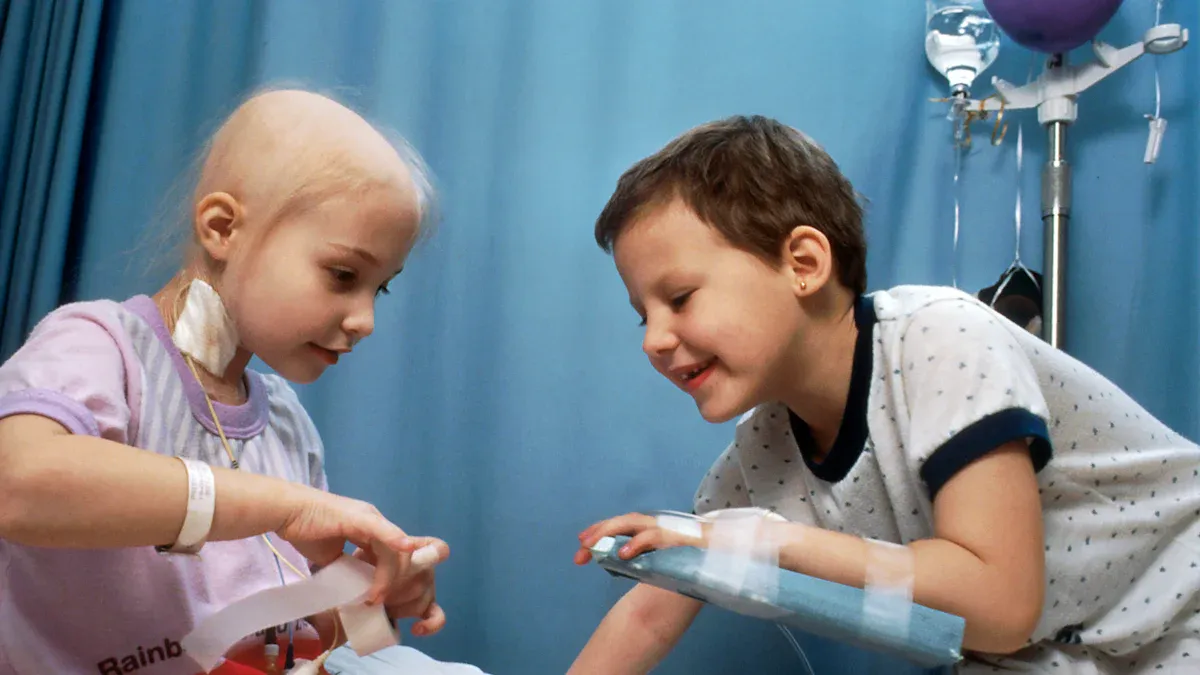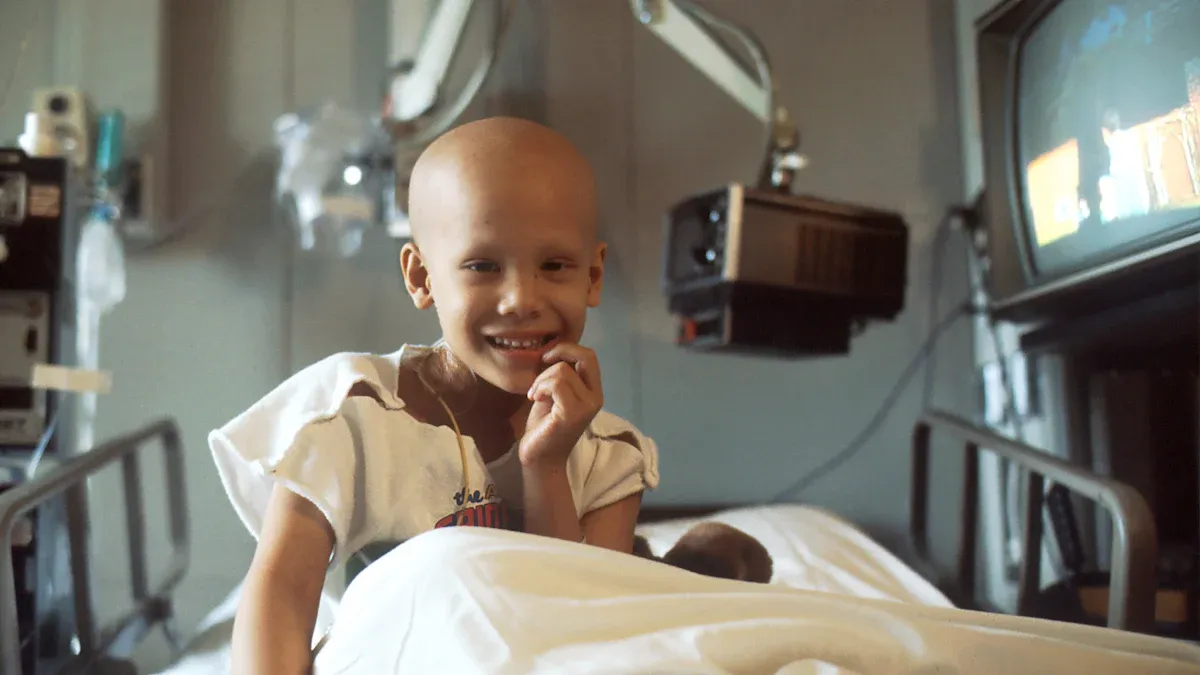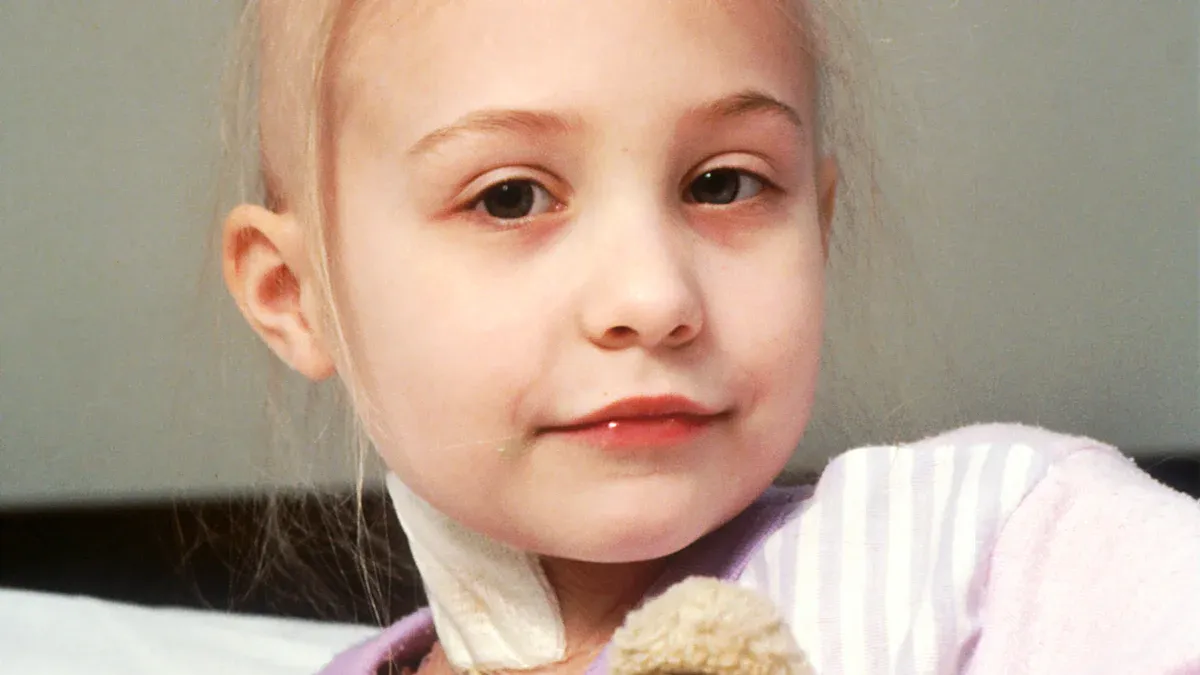Do Children Get Cancer? The Facts You Need

Do Children Get Cancer? The Reality of Childhood Cancers is a question that many may ask, and the answer is yes, though it is rare. Each year, over 300,000 children worldwide are diagnosed with cancer. In the United States alone, approximately 15,780 children face this life-altering challenge annually. Despite its rarity, childhood cancers remain the leading cause of death by disease among children in America. While these cancers represent only a small percentage of all cancer cases, their impact is deeply significant. For instance, leukemia, one of the most common childhood cancers, has experienced a 35% increase in incidence over the past 40 years. Understanding Do Children Get Cancer? The Reality of Childhood Cancers equips you with the knowledge to stay informed and maintain hope.
Key Takeaways
Childhood cancer is uncommon but affects over 300,000 kids yearly. Knowing about it helps find it early.
Leukemia is the most common type, making up 30% of cases. Learning about it helps spot signs sooner.
Survival rates for childhood cancer are now over 80% in richer countries. Better treatments make this possible.
Finding cancer early and new treatments, like targeted therapies, improve survival. See a doctor if symptoms show up.
Families dealing with childhood cancer need support, like community help and emotional care. Use these resources for support.
Do Children Get Cancer? The Reality of Childhood Cancers

How Common Are Childhood Cancers?
Statistics on childhood cancer cases in 2025
Childhood cancer remains rare compared to adult cancer, but it still affects thousands of children globally. In 2025, experts estimate that over 300,000 children worldwide will receive a cancer diagnosis. In the United States, the annual incidence rate for children under 19 years is approximately 200 cases per million. However, this rate varies across age groups. For example:
Children under 5 years: 231 cases per million
Ages 5 to 9 years: 127 cases per million
Ages 10 to 14 years: 158 cases per million
Ages 15 to 19 years: 241 cases per million
These numbers highlight the importance of understanding childhood cancer trends and their impact on young lives.
Trends in childhood cancer diagnoses over recent years
Over the past 30 years, the incidence of childhood cancer has slightly increased. This rise may result from improved diagnostic techniques and greater awareness. Despite this, mortality rates have significantly declined due to advancements in treatment. Childhood cancer remains the second leading cause of death among children aged 0 to 15, following injuries.
Most Common Types of Childhood Cancers
Leukemia and its prevalence in children
Leukemia is the most common type of childhood cancer, accounting for about 30% of all cases. It primarily affects the blood and bone marrow. Hispanic and American Indian/Alaska Native children show higher leukemia incidence rates compared to other groups. In regions like North America and Europe, leukemia cases range from 25.5 to 33 per million children.
Brain and central nervous system tumors
Brain and central nervous system (CNS) tumors are the second most common childhood cancers. These tumors account for about 20% of cases. White and American Indian/Alaska Native children experience higher rates of CNS tumors compared to other ethnic groups.
Other notable types like lymphoma and neuroblastoma
Lymphomas, including Hodgkin and non-Hodgkin types, are also prevalent among children. In regions like Europe and North America, lymphoma cases reach up to 52 per million children. Neuroblastoma, a cancer that develops in immature nerve cells, is another significant type. It primarily affects children under 5 years.
Understanding these common types of childhood cancers helps you recognize their impact and the need for continued research and support.
Survival Rates of Childhood Cancers in 2025
Global Survival Rates
Average survival rates for major types of childhood cancers
Childhood cancer survival rates have improved significantly over the years. In 2025, survival rates for children with cancer in high-income countries exceed 80%. However, in low- and middle-income countries (LMICs), survival rates remain below 30%. This disparity highlights the importance of access to advanced treatments and healthcare infrastructure.
Globally, approximately 400,000 children aged 0–19 develop cancer each year. Among these, nearly 90% live in LMICs, where limited resources and delayed diagnoses contribute to lower survival rates. For example, the 5-year survival rate for acute lymphoblastic leukemia (ALL) has risen from 57% in 1975 to over 92% in recent years, showcasing the impact of medical advancements.
Comparison of survival rates across different regions
Survival rates vary significantly by region:
Region | Survival Rate |
|---|---|
High-Income Countries | >80% |
Low-Income Countries | <30% |
The World Health Organization's Global Initiative for Childhood Cancer aims to address these disparities. Launched in 2018, this program seeks to achieve at least a 60% survival rate for children with cancer worldwide by 2030.
Factors Affecting Survival Rates
Importance of early detection and diagnosis
Early detection plays a critical role in improving survival outcomes. When cancer is identified at an early stage, treatments are more effective, and children often require less aggressive therapies. Studies show that early surveillance in children with genetic predispositions leads to earlier tumor detection. In many cases, this allows for complete surgical removal without the need for chemotherapy or radiation.
Role of advancements in treatment and technology
Advancements in treatment have revolutionized childhood cancer care. Targeted therapies and immunotherapy have improved outcomes for many cancer types. Additionally, better diagnostic tools and imaging technologies enable doctors to identify and treat cancers more precisely. These innovations have contributed to a steady decline in annual excess deaths since the 1980s.
Access to healthcare and socioeconomic factors
Access to healthcare remains a significant factor in survival rates. In high-income countries, over 96% of children have access to essential cancer medicines, compared to only 29% in LMICs. Socioeconomic challenges also impact families. One in five children diagnosed with cancer lives in poverty, and many families face financial hardships due to treatment costs.
Income Level | Cure Rate | Availability of Cancer Medicines |
|---|---|---|
High-Income Countries | >80% | 96% |
LMICs | <30% | 29% |
Addressing these disparities is crucial to improving survival rates for all children, regardless of where they live.
Advances in Treatment and Care

Medical Advancements
Breakthroughs in targeted therapies and immunotherapy
Recent breakthroughs in childhood cancer treatment have transformed outcomes for many young patients. Targeted therapies and immunotherapy focus on attacking cancer cells while sparing healthy tissues. These advancements reduce side effects and improve recovery. For example:
Functional precision medicine now combines genetic and drug testing to guide treatment. This approach has improved outcomes for 83% of children with relapsed cancer.
The FDA recently approved Tovorafenib, a less invasive treatment for low-grade gliomas. About 70% of children treated with this drug experienced tumor shrinkage.
CAR T-cell therapy, a type of immunotherapy, has shown remarkable success in treating certain blood cancers.
These innovations offer hope for better survival rates and quality of life for children battling cancer.
Improvements in radiation and chemotherapy techniques
Modern radiation and chemotherapy techniques have also advanced significantly. These methods now target cancer more precisely, reducing damage to surrounding tissues. Over the decades, survival rates have improved dramatically:
The 5-year survival rate for acute lymphoblastic leukemia (ALL) rose from 57% in 1975 to over 92% in recent years.
Non-Hodgkin lymphoma survival rates increased from 43% in 1975 to 91.4% today.
These improvements have contributed to a 50% decline in childhood cancer mortality since 1980.
Support for Children and Families
Role of pediatric oncology specialists and care teams
Specialized pediatric oncology teams play a vital role in treatment. These experts focus on managing symptoms and tailoring care to each child’s needs. Studies show that linking symptom reports to care pathways improves outcomes and enhances quality of life.
Importance of emotional and psychological support
Cancer affects more than just the body. Emotional and psychological support helps children and families cope with the challenges of treatment. Addressing mental health needs improves recovery and long-term well-being.
Tip: Encourage open communication with your child’s care team to address emotional concerns early.
Community and nonprofit resources for families
Nonprofit organizations and community groups provide essential resources for families. These include financial assistance, counseling, and support networks. Accessing these services can ease the burden of treatment and foster a sense of community during difficult times.
Childhood cancers are rare, but they do occur. Understanding the facts helps you stay informed and hopeful. Survival rates have improved significantly, especially in high-income countries where over 80% of children survive. In contrast, less than 30% survive in low- and middle-income countries. Advancements in treatments, such as Blinatumomab, have increased three-year disease-free survival rates to 96%, compared to 87% in control groups.
Cancer Type | 5-Year Survival Rate (1975) | 5-Year Survival Rate (2014-2020) |
|---|---|---|
Acute Lymphoblastic Leukemia (ALL) | 57% | |
Non-Hodgkin Lymphoma | 43% | 91.4% |
With continued progress, better outcomes are possible. Support systems and resources are available to help you and your family navigate this journey.
FAQ
What are the early signs of childhood cancer?
Early signs include unexplained weight loss, persistent fatigue, frequent infections, unusual lumps, or prolonged pain. You might also notice changes in vision, headaches, or bruising without cause. Always consult a doctor if symptoms persist.
Tip: Keep track of any unusual symptoms and share them with your child’s healthcare provider.
Can childhood cancer be prevented?
Most childhood cancers cannot be prevented because they often result from genetic mutations rather than lifestyle factors. However, avoiding exposure to harmful chemicals and radiation may reduce risks.
Note: Genetic counseling can help assess risks if your family has a history of cancer.
How is childhood cancer diagnosed?
Doctors use blood tests, imaging scans (like MRIs or CTs), and biopsies to diagnose cancer. These tests help identify the type and stage of cancer. Early diagnosis improves treatment outcomes.
Are childhood cancer treatments different from adult treatments?
Yes, treatments for children focus on minimizing side effects and long-term impacts. Pediatric oncology teams use specialized therapies like targeted treatments, immunotherapy, and child-friendly chemotherapy protocols.
What support is available for families of children with cancer?
Nonprofits, community groups, and hospitals offer financial aid, counseling, and support networks. You can also find resources for emotional and psychological support tailored to children and families.
Tip: Reach out to organizations like St. Jude Children’s Research Hospital or the American Childhood Cancer Organization for assistance.
See Also
Understanding Embryonal Carcinoma: Essential Information You Should Know
Insights Into Carcinoid Tumors: Important Details To Consider
An In-Depth Overview Of Various Cancer Types Available
